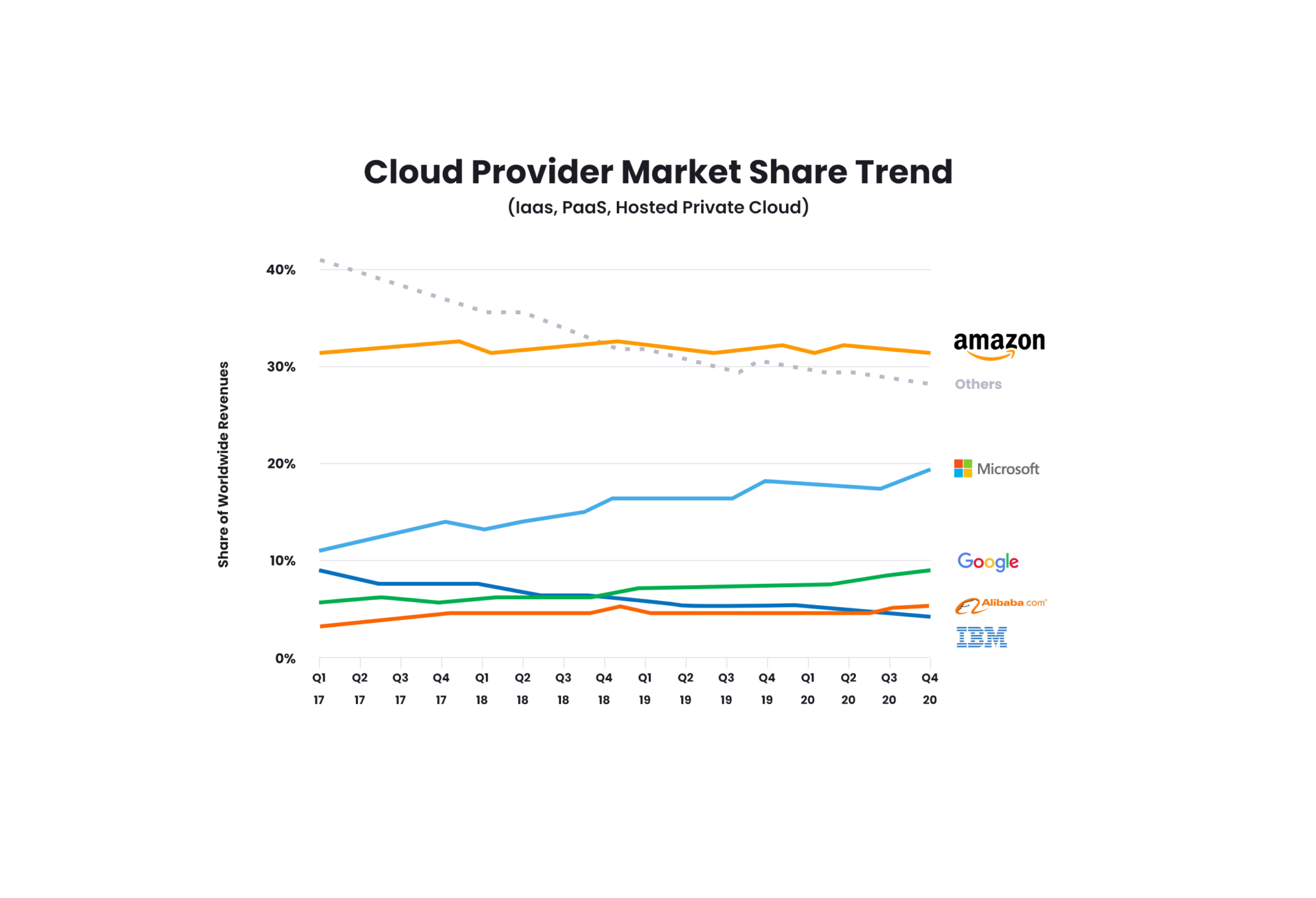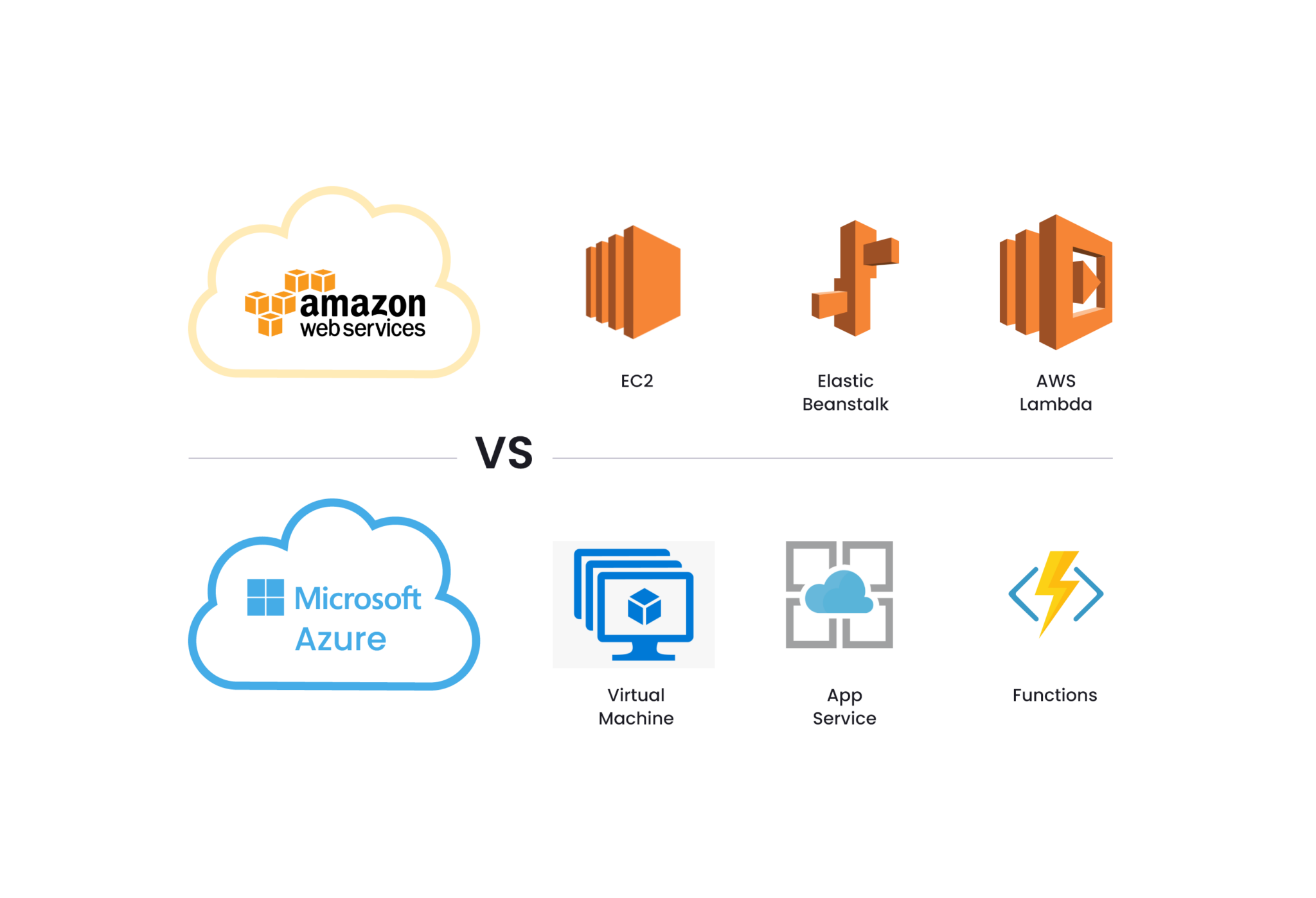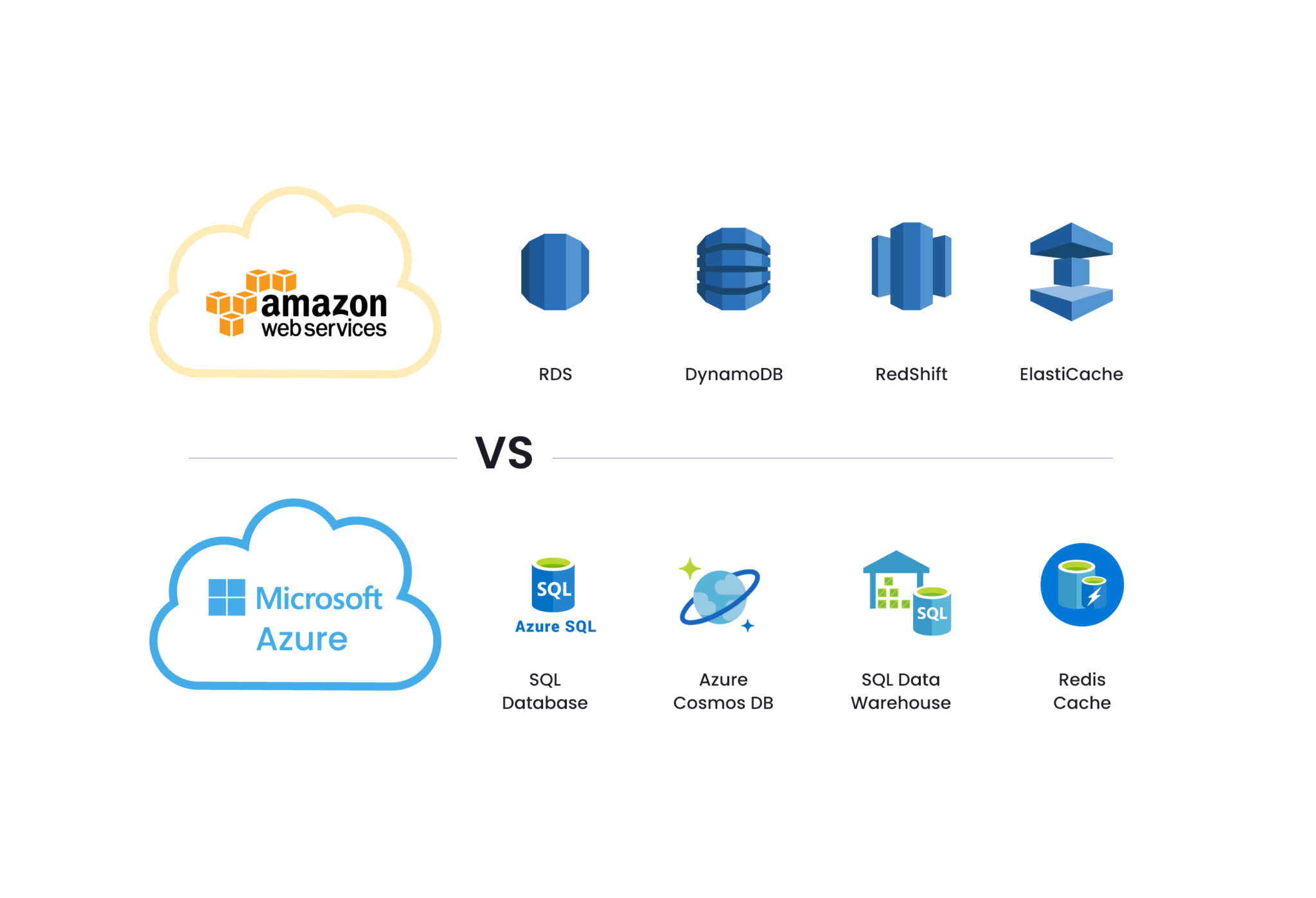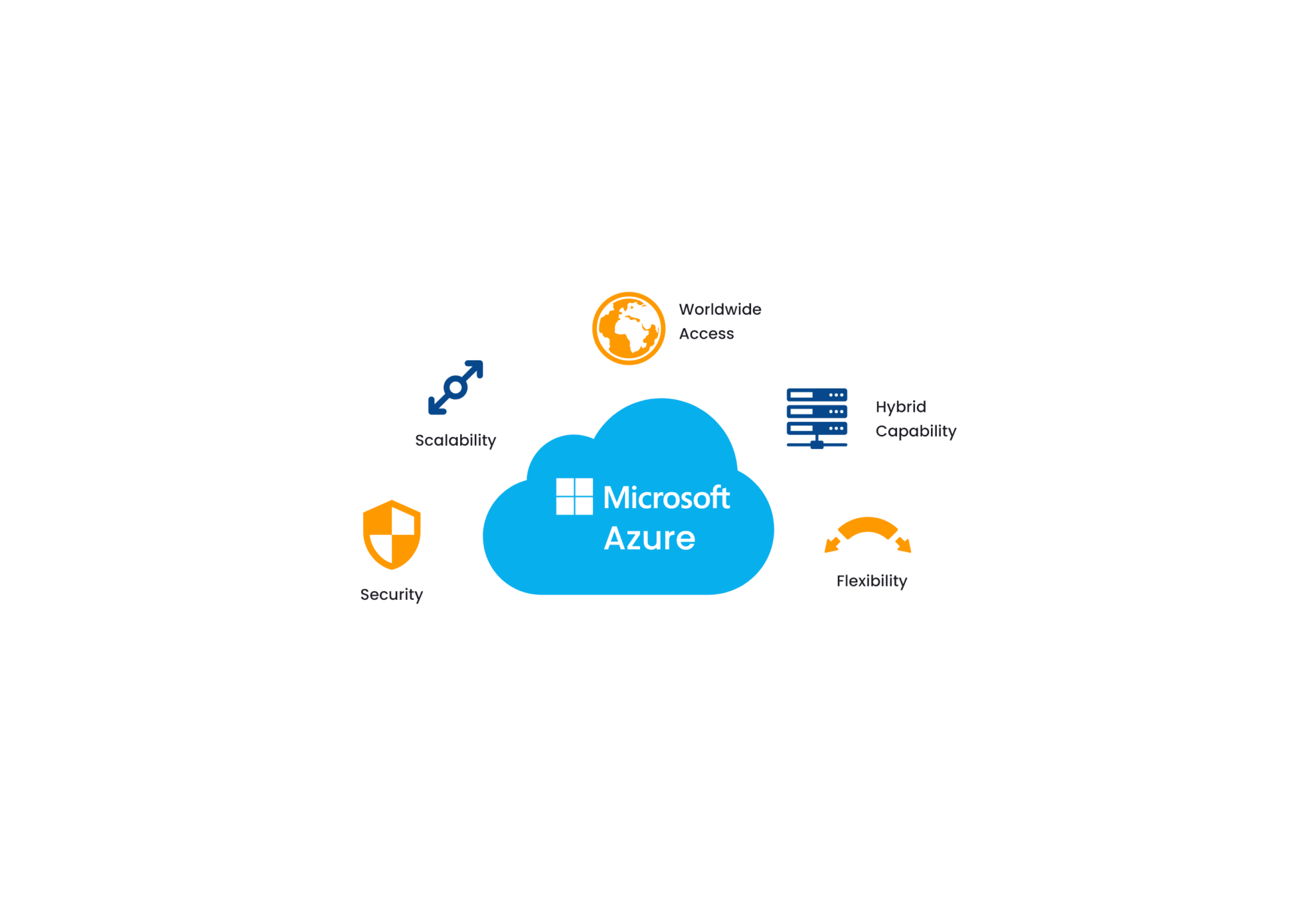You can use this AWS VS Azure comparison to determine which public cloud service is best for your requirements.
If you’re just getting started with cloud computing, you’ll want to choose a cloud platform that makes it easy for you to get up and running. It is critical for anybody interested in pursuing a career in cloud computing to get familiar with the many prominent cloud service providers before determining which cloud is the best fit for their interests as well as for the demands of the organizations. In today’s age of big data and data science, cloud computing platforms are the best choice many would resort to.
In addition to the learning community, several enterprises are interested in comparing AWS VS Azure before deciding whether or not to migrate to a cloud-based infrastructure. However, the fact is that this is not a choice based on technical considerations. For most use cases, both AWS and Azure perform equally well. The choice between Azure and AWS is more of a business one. And it is based on the organization’s needs and standards.
The Global Market Share of Cloud Service Providers
Before we get into the specifics of the comparison between AWS VS Azure, it’s necessary to highlight the market share. These statistics clearly show the big picture of AWS VS Azure’s competitiveness in the cloud provider market.
According to Statista, AWS was the most popular provider in the cloud infrastructure services industry in the third quarter of 2021, controlling 32% of the total market in that quarter. Microsoft Azure is in second place with a market share of 21%. And Google Cloud remains in third place with a market share of 8%. In the third quarter of 2021, these three leading cloud vendors accounted for 61% of overall spending.

These vendors provide virtual machines, machine learning, cloud-native development, data analytics, application migration, and a variety of other services via their cloud service offerings.
AWS VS Azure Differences Explained
What exactly is AWS?
As a cloud service platform, Amazon Web Services (AWS) offers various services in several domains. And these include computing, storage, delivery, and other functionality, all of which assist organizations in scaling and growing. Using these services, we can create and deploy various apps on the cloud platform.
To produce a scalable and efficient outcome, AWS services are intended to work in conjunction with one another. There are three types of AWS services: Infrastructure as a Service (IaaS), Software as a Service (SaaS), and Platform as a Service (PaaS). After being introduced in 2006, AWS has risen to become one of the best cloud platforms available today among the several cloud platforms currently in existence. Cloud platforms provide many benefits, including fewer administrative overhead, lower costs, and more.
What exactly is Azure?
After launching in 2010, Microsoft Azure quickly rose to become one of the world’s largest commercial cloud service providers. Analytics, computing, networking, database, storage, DevOps, mobile, and web applications are just a few of the integrated cloud services and functions available. They easily connect with your environment to maximize efficiency and scalability.
Azure services are generally categorized as Platform as a Service (PaaS), Software as a Service (SaaS), and Infrastructure as a Service (IaaS). Developers and other employees can use services to build, deploy, and manage services and applications in the cloud.
Let’s get to the AWS VS Azure comparison now:
AWS VS Azure Compute Comparison
The compute parameter is the first halt in this AWS VS Azure post.
A computer’s primary function is to calculate, process, and compute. The right cloud service provider can assist you in scaling to thousands of processing nodes in a matter of minutes. There are two options for organizations in need of speedier data processing or graphics rendering: buying additional hardware or moving to the cloud. This is the ultimate purpose of public cloud computing services.
When it comes to computing, AWS’ fundamental solution is its EC2 instances, which offer scalable computing on demand and can be configured to suit specific requirements. Moreover, it offers additional related services, such as AWS Lambda, Autoscaling, Amazon EC2 Container Service, Elastic Beanstalk for app deployment, etc.
Azure, too, offers services comparable to those described above, including Azure Virtual Machine, App Service, Azure Functions, Container Service, and so on. This indicates that the competition between these providers is close.

In terms of computing power, AWS dominated in the past era, but Azure really did catch up, becoming a viable contender approaching the market later on.
Storage Comparison: AWS VS Azure
Storage is the next factor that we compare between AWS VS Azure.
The capacity to store data is one of the most important features cloud service providers offer. Running cloud-based services necessitates storing data processed at some point in the process. Although AWS’s storage services have been in operation for the longest time, Azure’s storage capabilities are incredibly reliable. These are two of the most powerful cloud storage services available today.. The storage method used by Azure is referred to as “blob storage.” On the other hand, the one used by AWS is referred to as Simple Storage Service (S3).
Customers who use Amazon’s cloud object storage service get high availability and automatic replication across different regions. Temporary storage in AWS is allocated when an instance is launched and released when the instance is terminated. As well as this, it offers block storage that is comparable to hard drives and can be attached to any EC2 instance or maintained as a standalone storage device.
For virtual machine-based volumes, Azure uses temporary storage and page blobs. Azure’s block storage option is comparable to Amazon Web Services’ S3 service. Storage in Azure is divided into hot storage and cool storage. Cool storage is less expensive than hot storage, but it comes with higher reading and writing costs. They can be utilized based on the frequency of accessing the data stored.
AWS VS Azure – Pricing Comparison
Cost is a major factor in this comprehensive comparison between AWS VS Azure.
Prices have been on a lower trend for quite some time due to increased competition among cloud service providers in recent years. AWS and Azure provide free introductory tiers with restricted use limits. And this allows consumers to experiment with their services before committing to a paid subscription. In addition, both companies provide credits to entice start-ups to use their cloud platforms as a marketing tool.
AWS and Azure offer pay-per-use pricing plans based on the number of hours you use the service. AWS may assist you in saving more money as your usage increases; the resources for a low cost. In order to elaborate on the AWS pricing scheme further, let us consider AWS instance types and their pricing plans.:
-
- Reserved Instances: One may reserve an instance for a period of one to three years by paying a one-time fee depending on the period of use.
-
- On-Demand instances: You just pay for what you use, with no need to commit to a large up-front investment.
-
- Spot Instances: Place a bit for resources which will allow a reduced price based on availability, which would serve applications with decent flexibility when extensive computing power is needed at certain times.
Microsoft Azure allows its consumers to make short-term commitments by enabling them to select between prepaid and monthly charges for their services. Azure is a bit less flexible than AWS when it comes to pricing models, but it is still competitive.
‘Amazon AWS VS Microsoft Azure – Databases
All software applications nowadays need the use of a database to store information. SQL database services are available from both Azure and AWS, regardless of whether you want a relational database or a NoSQL solution. Both Amazon’s RDS (Relational Database Service) and Microsoft’s SQL Server databases are highly available and durable, and they both provide automatic replication.
AWS is well-suited for both NoSQL and relational databases. And it offers a sophisticated cloud environment for large data processing. AWS’s primary analytics product, EMR (a managed Hadoop, Spark, and Presto solution), assists with the setup of an EC2 cluster and allows integration with various other AWS services. Both relational and non-relational databases are supported by Azure HDInsight and Azure Tables for large data storage and querying. Through its Cortana Intelligence Suite, Azure delivers analytical solutions that come with Hadoop and Spark, as well as Storm and HBase.
Azure’s SQL database service is primarily based on Microsoft SQL Server. But it also supports a few others, such as Cosmos DB, Redis, and Apache Cassandra. When it comes to doing different database operations, Azure’s interface and tools simplify them. However, AWS offers many instance types that you can supply and gives you more control over DB instances.

AWS VS Azure – Networking
Different networks and partners link the data centers across the world via various products offered by cloud service providers. Using AWS’s virtual private cloud (VPC) service, customers can construct their own private networks in the cloud. Within a VPC, a user can create route tables, subnets, private IP address ranges, and network gateways.
In a similar vein, Azure provides the ability to establish isolated networks via the use of Virtual Networks (VNETs). Both AWS and Azure provide customers with firewall choices to provide security to the described networks.
AWS VS Azure Machine Learning Comparison
AWS provides SageMaker, and Azure has a machine learning studio. And these facilitate the development of machine learning models more quickly and simply. But how do they vary from one another? To build, train, and deploy a machine learning model more quickly, AWS and Azure offer managed services covering the end-to-end machine learning pipeline. Despite this, how these companies deliver machine learning as a service is very different.
Amazon Sagemaker builds the model depending on the code written. Azure features a simple drag-and-drop user interface where the model building process can be architected on canvas. In contrast to Amazon SageMaker, Azure’s Studio does not require users to get fully familiar with Python coding, data engineering difficulties, and other open-source tools.
Azure Studio is sentenced to be deprecated by 2024. It has not been productive in building accurate models for many problems, and there have been some other issues too. In this regard, Amazon SageMaker has been successful. Azure will move to Azure Machine Learning (instead of Machine Learning Studio). It will feature a much more similar identity to SageMaker, where you’ll have to be familiar with programming to build models.
AWS VS Azure – Container and Orchestration Support
The fact that AWS offers more mature big data and analytics services than any other cloud provider has already been proven. Based on customer requirements, it offers a wide range of services in sectors such as the Internet of Things (IoT), mobile app development, and the creation of a computing environment. They also provide support for the Docker container-based operating system.
With services like Azure HDInsight, Microsoft competes on an equal footing and may perhaps go a step further by providing Hadoop support. Both Windows and Hyper-V containers running on Windows Server 2016 may be integrated with Docker. The platform also runs Linux or Windows containers.
AWS VS Azure Compliance Comparison
Amazon has a strong partnership with government agencies to provide better government cloud services. They also have excellent security mechanisms in place, ensuring that only authorized users have access to the cloud. When dealing with sensitive data, this is a critical factor to consider.
Microsoft has more than 50 compliant products. Some of the most well-known include International Traffic in Arms Regulations (ITAR), Health Insurance Portability and Accountability Act (HIPAA), etc. AWS and Azure are neck and neck in the competition when it comes to security.
Who Will Be the Leader in the Future, AWS or Azure?
In the cloud platform market, both AWS and Azure have the chance to carve out their own space. They both serve some unique needs that don’t overlap very much, so they could make their own space.
Because of its early introduction, AWS was the sole option for businesses looking for cloud computing solutions. While its early introduction provides it with a competitive advantage, it initially lacked enterprise features and has only lately begun to include them in its offering.

However, Microsoft Azure is capable of providing seamless service to large corporations. The ability to provide customers with the required assistance for quickly scaling up and scaling down QA/test environments is enabled by the ability to deliver economic benefits.

Treinetic’s Final Thoughts on AWS VS Azure Winner
The purpose of this article was to offer some insight into the AWS VS Azure debate. But in this AWS VS Azure cloud service provider battle, there is no clear victor. A multi-cloud approach is possible because organizations may pick and choose the best features from each cloud service provider. A multi-data center hosting solution is recommended for businesses that need high availability and resilience.
It is incredibly difficult to compare Azure with AWS. And that’s because both companies are always introducing new pricing structures, new products, and new integrations. When deciding between the two platforms, the organization’s requirements must be considered, as well as how well the AWS VS Azure comparison meets them. What matters the most is that one does comprehensive research to assess what is really needed and what the service provider has to provide, regardless of whatever comparisons are made.

